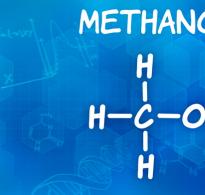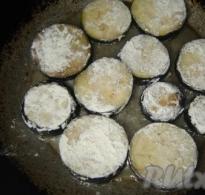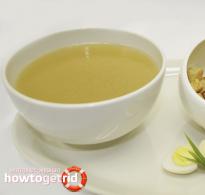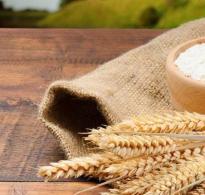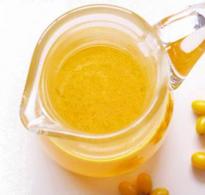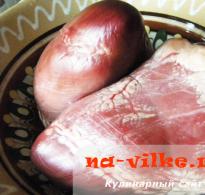Halva, calorie content, benefits and dietary properties. How many calories are in sunflower halva: healing properties and harm
Rarely a sweet tooth can pass by halva - real oriental sweets, which the inhabitants of harems enjoyed with pleasure for many centuries. Today, halva amazes the imagination of sweet lovers not only with its excellent taste, but also with its many varieties. Almond, sunflower, pistachio, sesame and even coconut - the list of types of delicacies can take a long time. What is the nutritional value of all this splendor, and is it possible to eat it without worrying about your figure? Alas, any halva has a high calorie content. And we’ll tell you which one now.
Composition of halva
Halva was enjoyed back in the 5th century AD; Iran is considered the birthplace of the sweet. Since then, many recipes for the delicacy have appeared, but the basis is most often seeds or nuts. However, there are halva recipes where there is neither one nor the other, but there is ordinary wheat flour.
In a more classical sense, halva is an oriental sweet made from:
- Nut pastes or oilseeds
- Caramel made from sugar and molasses. At home, sometimes the caramel mass is replaced with honey
- Foaming agent. It is to him that halva owes its characteristic fibrous structure. Basically, licorice or soap root is used for these purposes, or egg whites
- Sometimes the recipe is supplemented with flavoring and aromatic additives: vanillin, cocoa, chocolate. Of course, in industrial production add emulsifiers, antioxidants, etc.
Nutritional value of halva
The nutritional value of halva, as well as the energy value, is directly dependent on the main component - the type of nuts or seeds from which the paste for the delicacy is made. However, the type of halva does not greatly affect the number of calories per 100 grams. Chemical composition various types halva is also approximately the same. Only the percentage of substance content changes, and even then only slightly.
In any case, halva is rich in vitamins and minerals:
- B vitamins
- Vitamins A
- Vitamins E
- Potassium
- Calcium
- Magnesium
- Sodium
- Phosphorus
- Iron - there is a lot of it in halva, especially sunflower halva. 100 grams of product contain 33 mg, which is almost twice as much as daily norm for humans
Halva is a treasure trove necessary for a person amino acids, because it is prepared from nuts or seeds rich in plant proteins.
Halva BJU for 100 grams:
- Proteins: 11.7
- Fat: 28
- Carbohydrates: 54
This ratio of proteins, fats and carbohydrates is typical for sunflower halva. In other varieties of the sweet delicacy, the indicators are slightly different, up or down. But the approximate ratio is the same: the product contains the most carbohydrates, almost twice as much as fats, and in last place are proteins. Unlike most other types of sweets, halva contains a lot of proteins.
Calorie content of halva
Now we are approaching the most interesting thing - the energy value of the product. For young ladies who ardently monitor every calorie that “enters” the body, this information can ruin their psyche. After all, the energy value of oriental sweets is high. We can say very high: on average, eastern halva calorie content per 100 grams is 557 units. Halva can be white, or it can be dark in color - the color of the product also depends on the main raw materials (nuts, seeds, sesame seeds and their combinations).
Let's look at the types:
- The calorie content of sunflower halva in 100 grams is 517 kcal
- Uzbek halva has 509 calories
- Samarkand halva: calorie content 487. This product can be found in retail chains, small kiosks, or made at home. As a rule, for cooking, in addition to nuts, butter and flour are used. Sesame seeds are sprinkled on top, there are products with pistachios, they are added whole, without grinding into flour
- Calorie content of tahini halva: 517 units. They make a treat out of sesame seeds, pre-grinding them finely. Another name for the product is sesame halva. Calorie content may be significantly less: 470 units. It depends on the recipe of the particular product.
- Azov halva (from Azovskaya confectionery factory) - caloric content 552 units
- Peanut halva (completely peanut or tahini-peanut) has 502 calories.
- Kos-halva white calories has 470 units. This is not quite halva in the traditional sense. The product tastes more like nougat with a high content of whole nuts and sometimes candied fruits
- Chocolate halva has a higher calorie content - over 570 kcal. As a rule, this is tahini halva made from sesame seeds with the addition of cocoa powder or chocolate. The color of the dessert is appropriate - appetizing light brown
Calorie content of halva in chocolate
In our country, halva is wildly popular, almost the same as in Arab countries. A particularly favorite treat since childhood and a symbol of the holiday is Rot Front halva, the calorie content of which seems prohibitive for many.
The bright red and yellow foil wrapper of this delicacy is probably recognized from thousands of others by all children of the USSR and the post-Soviet space. Candies are traditionally placed in New Year's sweet gifts or hung on a decorated Christmas tree. But only in childhood can you carefree carry hidden sweets, keeping count only of the shiny empty candy wrappers. Adults seeing favorite treat, begin to frantically figure out how many calories and sugar it contains.
The calorie content of halva in Rot Front chocolate is 534 kcal per 100 grams. This is one of the most high-calorie types of halva, for obvious reasons. It is made from grated peanuts, and cocoa butter substitutes and cocoa powder are added to prepare the glaze.
Even children won’t eat packs of this sweetness; most often we are content with one or two pieces. One candy weighs a lot - 27 grams. Thus, halva in chocolate has a calorie content of 1 piece of approximately 144 units. It’s not at all an “easy” pleasure, but sometimes you can afford it even for those who closely monitor their diet. The product, as we said, contains many useful substances.
The favorite delicacy of girls from the harems of the East is halva. Just think, historians attribute the origin of this sweet to the 5th century BC. e.! Having reached the present day, halva has received many specific interpretations, and today we will figure out why halva is useful or more harmful to our body. We’ll also learn how to cook it ourselves different types such sweetness.
Application in dietetics
Despite the prejudices that when dieting, especially for weight loss, any sweets are contraindicated, it is not only possible to include halva in your diet, but in some cases it is even necessary. The exception is the percentage of people suffering diabetes mellitus, pancreatitis, liver diseases, obesity and allergic diseases. For everyone else, nutritionists recommend: 
- eat no more than 30 g of halva per day, it is better to take it before lunch and without drinking it with sweet drinks, and also not to get carried away with it every day;
- take into account the calorie ratio of a single meal– if you want to eat halva, the main meal should be lower in calories;
- do not offer halva to children under 6 years of age due to the risk of harming young teeth, mucous membranes, or the likelihood that small child may choke.
For people on a diet, classic halva without additives is perfect. There is even dietary halva.
Recipes and calories
It is quite simple to prepare oriental sweets at home, knowing step by step recipes and having everything necessary ingredients.
The table below shows the calorie content of some types of halva:
I also offer you some of the most popular recipes halva.
Dietary halva
Ingredients: 
- (peeled) – 1 tbsp.;
- peanut butter – 3 tbsp. l.;
- or maple syrup– 3 tbsp. l.
Using a blender, grind the seeds until mushy. Combine the resulting mass with peanut butter and honey, mix well, then shape into the desired shape and leave to harden in the refrigerator for a few minutes.
Calorie content of halva on a diet per 100 grams: 405 kcal.
Peanut halva
Ingredients: 
- – 1 tbsp.;
- sugar – 1 tbsp;
- water – 4 tbsp. l.;
- – 100 g;
- flour – 1 tbsp.;
- sesame – 50 g.
Bake the peanuts in the oven at 180ºC for 20 minutes, then leave them in the turned off oven for 15 minutes. Butter Remove from the refrigerator until it is close to room temperature.
Fry the flour in a dry frying pan, then fry the sesame seeds in the same way, and grind the cooled peanuts in a blender. Dissolve sugar in hot water, add oil, peanuts, sesame seeds and mix. Without ceasing to stir, gradually add flour. We shape the halva and put it in the refrigerator.
Calorie content of peanut halva per 100 grams: 502 kcal.
Ingredients: 
- flour - 3 tbsp. spoons;
- butter – 25 g;
- milk – 2 tbsp.;
- sugar – 1/2 tbsp.;
- water.
Melt the butter, add the sifted flour, mix and fry in a frying pan until brownish. Add a small amount of water and stir so that no lumps form. Boil milk, dissolve sugar in it, then add flour and simmer over low heat until thick. Place the halva in molds, smooth it out and let it cool.
Calorie content Uzbek halvaper 100 grams: 509 kcal.
Sunflower halva
Ingredients: 
- sugar – 1/2 tbsp.;
- flour – 3/4 cup;
- vegetable oil – 1/2 tbsp.;
- water – 2 tbsp. l.
Lightly fry the seeds in a dry frying pan, pour into a bowl, and then also fry the flour. Grind the seeds and flour in a blender. Bring sugar and water to a thick syrup over heat, add vegetable oil and quickly pour it into the seed flour, while actively mixing the resulting mass. Place in a mold and place in the refrigerator.
Calorie content of sunflower halva per 100 grams: 523 kcal.
Halva with fructose
Ingredients: 
- flour – 1 tbsp.;
- sunflower seeds (hulled) – 1 tbsp.;
- fructose – ¾ cup;
- water – 1/3 cup;
- Sunflower oil – 2 tbsp. l.
Fry the flour, add the ground seeds and fry for another 5 minutes. Cook the fructose syrup with water until viscous, then add vegetable oil and bring to a boil. Pour the syrup into flour with seeds, mix, spread ready mass into the mold and cool.
Calorie content of halva with fructose per 100 grams: 570 kcal.
Did you find answers to your questions in this article? Perhaps you know others important details on this topic? Share with everyone in the comments!
Apr-10-2013
Halva, as it turns out, is a very complicated product. In addition to some negative qualities inherent in sweets, it also has a lot of useful properties. For example, one cannot deny the benefits of halva as a source of energy for the body (and for a product such as halva, the calorie content is very significant). Such a feature of this oriental delicacies was known to people in ancient times. When going on a long trip, travelers always stocked up on it, since it does not require any special conditions to be stored.
Let's find out what else this sweetness, beloved by many, can be useful for you and me, how great it is nutritional value? We'll talk about this later.
Halva, benefits and dietary properties:
In Russia and Eastern European countries, the most common type of halva is sunflower. It is a rich source of vitamins B1, PP, and F1. The listed vitamins have a positive effect on the condition of hair, help restore it, and protect it from stress-induced hair loss. In addition, these vitamins are good for the skin, protect us from free radicals, and slow down the aging process.
The almond halva is very good. She has wonderful peculiarities taste properties. Of all types of halva, it contains less oil and more amino acids. Almond halva has a high content of vitamin D, which is necessary for the strength of bone tissue.
In Middle Eastern countries, spicy sesame is traditionally used to prepare halva. Sesame halva contains a lot of zinc, calcium, phosphorus, manganese, B vitamins, and antioxidants. Easterners consider it delicious medicine for migraines, colds, a means to restore strength.
Peanut halva contains linoleic acid, vitamins PP and B2. It helps strengthen memory, relieve nervous tension, and affects the neural connections of the brain.
Eastern women are familiar with the saying that halva is “the sweet road to motherhood.” This sweetness will be useful for those of us who want to get pregnant and bear a healthy child. This is due to the content of any type of halva folic acid(vitamin B9).
Halva, calorie content:
We must not forget that halva is a very high-calorie product.
The calorie content of halva ranges from 500-570 kcal per 100 grams
And it is not indicated for obesity, metabolic disorders, diabetes. Some components included in halva can provoke allergic reactions.
What is the calorie content of cooked halva? in different ways? And here it is:
Calorie table for halva, per 100 grams of product:
And the nutritional value of halva prepared in different ways is as follows:
Table of nutritional value of halva, per 100 grams of product:
Any useful product can be beneficial if taken reasonable measures. This also applies to halva. Don't forget that this is not a main product, but a delicacy. And you simply cannot use it every day. 20-30 grams is enough to enjoy this sweet product. The body will get everything useful components, which halva contains, but its calorie content will not have a significant effect on your figure.
Can this product be prepared at home? Can! Here is one of the recipes:
Walnut halva:
Products:
- Walnuts (shelled) – 150 gr.
- Butter - 100 gr.
- Sugar – 200 gr.
- Milk – 400 gr.
- Corn starch – 15 gr.
Starch diluted in cold milk is added to the hot milk syrup (proportion - 1:5). Stirring, bring this mixture to a boil. The nut kernels, cut in half, are fried in oil until they turn dark brown. Then they are placed in a pan, poured with the prepared milk mass and the pan is tightly closed with a lid. Wrap the edges of the lid with a towel and heat the mass for another 25-30 minutes. Then remove the lid, mix everything well again, pour the mixture onto a dish and sprinkle crushed cinnamon on top. The finished halva is served on the table while still hot. That's all! Eat to your health, but without fanaticism, since the calorie content of halva is so high that you can easily ruin your figure.
Halva has been known to the world since the 5th century BC.
It was first produced in Iran.
How she got to Russia is unknown to anyone.
But its popularity rapidly gained momentum and became widespread.
Pleasant aroma, unique taste, crumbly consistency - this sweetness has won our hearts since childhood.
Halva is a product oriental cuisine. As you know, people of the East know a lot about taste. They put all their love and soul into the product. It is interesting to note that in Eastern countries, halva is still made by hand.
What is its composition?
The main components are as follows:
Soap root
Walnuts, almonds, peanuts or sunflower seeds
Halva comes in different forms. There are about a hundred of its varieties. Here are some of the most popular types, which currently offer sweets shops:
Nut – based on nuts: almonds, pistachios, cashews
Sunflower – based on sunflower seeds
Sesame - has a bitter taste and gray color
Combined - for example, sesame with peanuts or sunflower seeds with candied fruits are combined
Chocolate - halva in glaze, high in calories, but very tasty
How is it made? Chop the nuts and beat until homogeneous mass, adding caramel. And, of course, soap root is definitely added. It is he who is responsible for the correct structure of halva.
Calorie content of halva
Halva is rich in carbohydrates, their content reaches 54 g per 100 g of product. They are mainly represented by sugars, which give halva its sweet, but good taste. People who care about their weight and slim figure should definitely limit and dose their consumption of halva.
This exotic delicacy cannot boast of low calorie content. There are up to 500 kcal per 100 g of product! The calorie content of sunflower halva even reaches 512 kcal. Sesame and almond halva have the lowest energy value.
Halva: what are the benefits for the body?
This is not just a gourmet dessert. Halva is a healthy product. At the biological level, it performs an extremely important construction function. What beneficial properties does she have?
Halva is easily absorbed and digested by the body. With rich content vegetable fats(up to 30%), it surpasses all confectionery products. It also contains amino acids, proteins and minerals.
Sunflower halva contains B vitamins. They help the body cope with stress, depression and insomnia. They also help maintain strong teeth, shiny hair and clean skin. Thanks to him, it stabilizes blood pressure.
In addition, sunflower halva, as proven by medical research, inhibits the occurrence of cancer: tumors of the intestines, ovaries and mammary glands.
The benefits of sesame halva are confirmed by Japanese research. They have proven that sesame contains special components that help cells renew and even slow down the aging process! Sesame halva will be especially useful for athletes after prolonged physical activity - it will restore strength and relax the body.
Halva provides enormous health benefits: best prevention heart disease! Abundant in halva useful elements, making up a complete set of “heart” minerals:
Manganese
Calcium
Marvelous, small piece halva - and the content is half of the periodic table!
Peanut halva improves memory and attention! It is also useful for the functioning of the heart and internal organs. By protecting cells from the destructive effects of radicals, it seems to protect the body from the occurrence of malignant processes. Interesting fact: Peanuts are a storehouse of folic acid! It is especially useful for pregnant women. This halva will also benefit athletes - it contains as much protein as meat. Active proteins will help increase muscle mass.
Useful property of pistachio halva: helps to recover from a serious illness. By breaking down cholesterol plaques, pistachios, which form the basis of this halva, keep the walls of blood vessels elastic and soft. A high content The fiber in pistachios stimulates intestinal function and cleanses the body of waste and toxins. Pistachio halva activates brain activity and helps cope with heavy intellectual stress.
Halva activates reproductive function. After all, halva is a source of complete protein, the benefits of which are especially observed during the period early dates pregnancy and the period of feeding the baby.
In halva great content linoleic and linolenic fatty acids. And they are remarkably resistant to atherosclerosis, a disease of the 21st century.
Tired? Tired? Does it seem like you have no strength at all? The best medicine is halva. It will replenish energy reserves and relieve fatigue better than any pills. Going on long journeys, travelers filled their backpacks with it, because special conditions it does not require storage. In addition, by consuming halva, we activate the body's protective functions, and resistance to infections increases.
Halva: what is harmful to health?
Harmful properties there is almost no halva. It can cause harm only in cases of its overuse, poor quality manufacturing, and, of course, in the presence of contraindications.
Doctors advise not to abuse halva. There are consumption standards for adults healthy person. It is enough to eat 25-30 g per day of this wonderful sweetness to experience all its benefits without causing harm to your health.
Contraindications for consumption:
Allergic diseases
Caries, periodontal disease
Pancreatitis
Diabetes mellitus
Obesity
Kidney stones or bladder
Having chronic diseases, a person can inadvertently harm his health. Often in stores you can find halva with the addition of sugar molasses. People with diabetes should strictly refrain from consuming this type of halva. But don’t be upset, stores have long released special halva for diabetics.
Halva is difficult to digest for those who have disorders of the digestive system. Halva is extremely harmful for acute pancreatitis and kidney diseases.
Under no circumstances combine eating halva with chocolate, dairy products, cheese and meat. Their heavy combination can cause a blow to the stomach.
Never buy halva with greasy spots on the surface - it is clearly stale! You should definitely pay attention to the packaging of the halva. If the product is sold by weight, its shelf life is extremely short. Halva, hidden under a layer of cardboard, can be stored for up to two months.
Manufacturers often add various additives, improving the taste of products. Halva is no exception: various sweeteners, preservatives, dyes and GMOs. Substances are often added that increase the shelf life of the product. You should be careful when purchasing! And carefully study the composition of the packaging.
Halva for children: good or bad
Halva is a product from natural ingredients. Therefore, it will not cause any harm to the child’s body. The nuts in halva are rich in vitamins A, B and E. And they, in turn, are necessary to strengthen the immune system, preserve vision and maintain proper operation cardiovascular system. It is better for children under 5-6 years old to refrain from eating sweets. Pieces of sweets can injure the oral cavity, get stuck in the teeth and lead to caries. In addition, it is easy to choke on.
Children over 6 years old can add halva to their diet, but be sure to monitor the dosage - 10-15 g per day. The composition of halva must contain exclusively natural ingredients without vegetable fats and preservatives. Check to see if your baby has a nut or seed allergy. It is important that it is better not to give sunflower halva to children, since the heavy metal contained in sunflower seeds affects the central nervous system.
When getting your child ready for school, instead confectionery sweets You can put a piece of halva in his bag. The child will be refreshed, active and for a long time won't get hungry! Halva will definitely become an essential component of your child’s afternoon snack along with a glass of milk or a cup of tea. However, you should not give your child halva every day. Today - wafer sweets, tomorrow - marmalade, the day after tomorrow - halva. It is best not to exceed the norm once a week.
How not to make a mistake when choosing halva?
There are several simple tips, guided by which you will purchase a fresh, healthy product that provides health benefits:
1) The packaging is not damaged and sealed
2) There is no oil or dark spots on the surface of the halva
3) Halva does not crumble when cut and retains its shape
4) There are no caramel veins, husks or uncrushed grains in the halva
5) The shape of the halva is even, the edges are the same
6) Halva looks dry and does not taste bitter
7) The expiration date corresponds to the stated period on the label
Halva is easy to make at home. This will require thick syrup caramel, peanut seeds, raisins, nuts. Boil the caramel syrup, beat with a mixer until foamy, chop the nuts well and add them to the resulting mass. Leave for a while and enjoy the taste later!
Halva is a sweet that reduces appetite and improves mood! Halva is not only a dessert, but also a wonderful snack between lunch and dinner.
Eat, enjoy and be healthy!
Halva is an oriental sweet that has bright taste and a pleasant aroma. That is why it is in great demand among adults and children.
But those people who are very concerned about their precious figure, before consuming this product, will wonder what it is made of and what the calorie content of halva is.
Halva is made from seeds, nuts and sugar. Now the factories that make it use own recipes, adding various components to create new species. Therefore, on store shelves there is often sesame, sunflower, peanut and even chocolate halva.
Halva is a crumbly product, which is achieved by whipping the caramel mass into foam. After this, the air mixture is mixed with seeds of various crops, for example, sesame and sunflower.
Benefits and harms
It is worth noting that this sweetness has not only excellent taste qualities, but also useful properties. It is rich in vitamin B1, which helps the cardiovascular system. Vitamin E has a beneficial effect on skin cells. In addition, halva contains cholesterol-free fats of plant origin. There are also fatty acids that can resist atherosclerosis. A dietary fiber its composition has a positive effect on intestinal function.
But such a quantity useful qualities doesn't mean it will suit everyone. First of all, this confectionery, which means its calorie content per 100 grams is quite high. Therefore, people with problems excess weight and diabetes, it is not recommended to abuse this product. It is also possible that allergic reactions. And so, this is a completely harmless product.
What is the calorie content of the product?
Knowing what oriental sweets are made from, it is easy to calculate its calorie content. In the East it is made by hand, and therefore the energy value is 410-420 kcal per 100 grams. This figure is significantly lower than that of a product manufactured in industrial conditions(its energy value is 570 kcal per 100 grams).
Calorie content of halva, especially sunflower, prepared using conventional technologies, high. Moreover, it can increase when adding more sugar or increasing raw fat content.
Different types - different calorie content
 Nowadays, there are three main types of this sweet that are most often found:
Nowadays, there are three main types of this sweet that are most often found:
- sunflower;
- sesame (tahini);
- peanut.
As already mentioned, sunflower sweetness has the highest energy value (on average 540 kilocalories per 100 grams). It contains a large amount of vegetable fats and a considerable proportion of vitamins PP and B1.
Therefore, it is recommended to be used by people who have problems with heart vessels or weak nervous system. Moreover, contained in sunflower halva nicotinic acid, normalizes cholesterol levels, and is also responsible for immune system and blood circulation. It turns out that sunflower halva - most valuable product, even considering that it has high nutritional value.
Sesame halva has a lower energy value, approximately 450 kilocalories per 100 grams. Sesame seeds are capable of burning fats and removing toxins and other harmful substances from the body. Consequently, halva made from it can do the same. It is rich in microelements, vitamins and minerals. Special attention deserve vitamins from group E.
They help blood clot and promote vasodilation, which reduces the risk of atherosclerosis. Sesame halva includes a number of elements: manganese, magnesium, zinc, calcium and vitamins from group B. Due to them, the heart muscle is strengthened and blood vessels are normalized.
Peanut oriental sweetness contains just over 500 kcal. Large portion folic acid in peanut halva improves brain function. Fatigue and psychological stress are also reduced. Calcium and zinc in peanut halva strengthen teeth, hair and bones and are involved in skin rejuvenation. All the beneficial properties and calorie content in peanut halva balance each other.
For those who watch their figure
Peanut sweets and other types of this product cannot be named dietary dish. But it can be made more useful if you replace sugar, which does not give the body anything valuable, with honey. It is absorbed better and has a positive effect on the human body.
To ensure that the weight loss process is not in vain, you should exclude Rot Front chocolate halva from the menu. Its calorie content is 535 kcal per 100 g (1 piece - 30 grams). But it satisfies hunger quite well and promotes energy production. Although, a small portion of Rot Front in chocolate will not affect your slimness.
Even if there is large quantity calories in halva, it still remains in demand. Of course, you shouldn’t consume this product every day, but sometimes you definitely need to treat yourself to a small piece of oriental sweetness.


.JPG)
